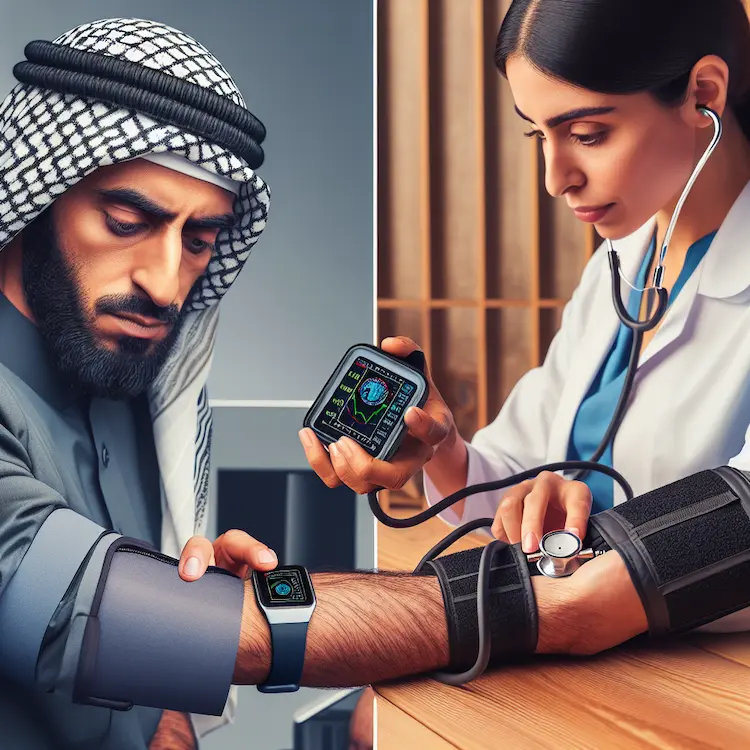Smartwatches have revolutionized the way we monitor our health, and blood pressure tracking is no exception. These wearable devices are transforming how individuals and healthcare professionals approach hypertension management, offering continuous monitoring capabilities that were once limited to clinical settings. This article explores the impact of smartwatches on blood pressure tracking, their accuracy, benefits, and potential future developments.
The Evolution of Blood Pressure Monitoring
Traditional blood pressure monitoring typically involved periodic measurements using cuff-based devices in clinical settings or at home. While effective, this method provided only snapshots of an individual’s blood pressure, potentially missing important fluctuations throughout the day. Smartwatches have changed this paradigm by offering the possibility of continuous, non-invasive blood pressure monitoring.

How Smartwatches Measure Blood Pressure
Smartwatches use various technologies to measure blood pressure:
- Photoplethysmography (PPG): This optical sensing method detects blood volume changes in the microvascular bed of tissue. PPG sensors in smartwatches emit light into the skin and measure the reflected light, which varies with blood flow.
- Pulse Transit Time (PTT): Some devices calculate blood pressure by measuring the time it takes for a pulse wave to travel between two arterial sites, typically from the heart to the wrist.
- Machine Learning Algorithms: Advanced algorithms process the raw data from these sensors, correlating various physiological signals to estimate blood pressure.
Accuracy and Reliability
While smartwatch technology for blood pressure monitoring is promising, it’s important to note that these devices are not yet as accurate as traditional cuff-based methods. Studies have shown varying degrees of accuracy:
- A study published in the Journal of Medical Internet Research found that smartwatch-based blood pressure measurements demonstrated a systematic bias, overestimating low blood pressures and underestimating high blood pressures.
- Another study revealed a significant effect on diastolic blood pressure measurements after 12 weeks of using a smartwatch with a blood pressure-monitoring feature.
To improve accuracy, many smartwatches require regular calibration with a traditional blood pressure cuff. This process helps the device’s algorithms adjust to an individual’s unique physiological characteristics.
Benefits of Smartwatch Blood Pressure Monitoring
Despite accuracy limitations, smartwatches offer several advantages for blood pressure tracking:
- Continuous Monitoring: Smartwatches can provide multiple daily readings, offering a more comprehensive view of blood pressure patterns.
- Convenience: Users can easily track their blood pressure without the need for separate equipment or clinical visits.
- Data Integration: Many smartwatches can sync blood pressure data with smartphone apps and electronic health records, facilitating better communication with healthcare providers.
- Increased Awareness: Regular monitoring can help users become more aware of their cardiovascular health and potentially motivate lifestyle changes.
- Early Detection: Continuous monitoring may help identify hypertension or other cardiovascular issues earlier than traditional periodic measurements.
Challenges and Limitations
While smartwatches show promise for blood pressure tracking, several challenges remain:
- Accuracy Concerns: As mentioned, smartwatch measurements are not yet as reliable as traditional methods.
- Regulatory Approval: Not all smartwatches with blood pressure features have received regulatory approval for medical use.
- User Dependence: Proper use, including correct wrist positioning and regular calibration, is crucial for accurate readings.
- Data Privacy: The collection and transmission of health data raise privacy and security concerns.
Comparison of Blood Pressure Monitoring Methods
| Method |
Accuracy |
Convenience |
Continuous Monitoring |
Data Integration |
| Traditional Cuff |
High |
Moderate |
No |
Limited |
| Smartwatch |
Moderate |
High |
Yes |
Extensive |
| Ambulatory Monitor |
High |
Low |
Yes |
Moderate |
Best Practices for Using Smartwatch Blood Pressure Monitors
To maximize the effectiveness of smartwatch blood pressure tracking:
- Calibrate your device regularly according to manufacturer instructions.
- Ensure proper wrist positioning during measurements.
- Take readings at consistent times and under similar conditions each day.
- Use the smartwatch in conjunction with, not as a replacement for, traditional blood pressure monitoring methods.
- Share your data with healthcare providers for proper interpretation and guidance.
Future Developments
The field of smartwatch-based blood pressure monitoring is rapidly evolving. Researchers and manufacturers are working on:
- Improving sensor technology for greater accuracy.
- Developing more sophisticated algorithms to interpret physiological data.
- Integrating blood pressure monitoring with other health metrics for comprehensive health assessment.
- Exploring the use of smartwatches in clinical trials and large-scale health studies.

Conclusion
Smartwatches are undoubtedly changing the landscape of blood pressure tracking, offering unprecedented convenience and continuous monitoring capabilities. While they are not yet a replacement for traditional clinical measurements, they provide valuable supplementary data that can enhance hypertension management and overall cardiovascular health awareness.
As technology continues to advance, we can expect smartwatches to play an increasingly important role in preventive healthcare and chronic disease management. However, it’s crucial for users and healthcare providers to understand both the potential and limitations of these devices, using them as part of a comprehensive approach to blood pressure management.

![]()